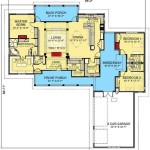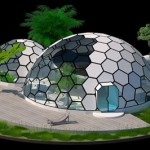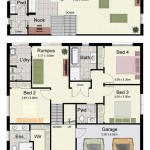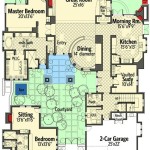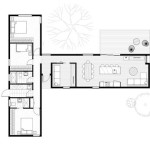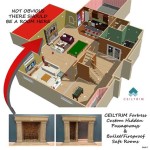Plans for bluebird houses provide detailed instructions and specifications for constructing nest boxes specifically designed to attract and accommodate bluebirds. These plans outline the materials, dimensions, and construction techniques necessary to create a suitable and habitable environment for these birds, ensuring their well-being and reproductive success.
The construction of bluebird houses is a practice commonly undertaken by bird enthusiasts, conservationists, and homeowners seeking to provide nesting sites for bluebirds. These birds are known for their striking blue plumage and their insectivorous diet, which makes them beneficial to the ecosystem by controlling insect populations. By providing bluebirds with suitable nesting locations, these plans contribute to the preservation and enhancement of their populations.
In the following sections, we will delve into the various considerations involved in planning and constructing bluebird houses, including the choice of materials, the design and dimensions of the house, and the proper placement and maintenance of these structures.
When planning and constructing bluebird houses, there are several key considerations to keep in mind to ensure the well-being and nesting success of these birds:
- Choose rot-resistant wood: Cedar, redwood, or cypress are ideal materials.
- Provide proper dimensions: The house should be 5″ x 5″ x 8″ with a 1-1/2″ entrance hole.
- Include ventilation: Drill small holes near the top of the house for air circulation.
- Add a drainage hole: This allows rainwater to escape and prevents mold growth.
- Avoid using paint or stain: These can be harmful to birds.
- Place the house in an open area: Bluebirds prefer sunny locations with clear flight paths.
- Mount the house on a post or pole: This protects it from predators and makes it easier for bluebirds to access.
- Clean the house annually: Remove old nesting material and disinfect the house to prevent disease.
- Monitor the house regularly: Check for signs of nesting activity and any potential issues.
- Consider multiple houses: Providing several nesting options increases the chances of attracting bluebirds.
By following these guidelines, you can create a suitable and inviting environment for bluebirds, supporting their nesting and reproductive success.
Choose rot-resistant wood: Cedar, redwood, or cypress are ideal materials.
When selecting the wood for your bluebird house, it is essential to choose a material that is naturally resistant to rot and decay. This is crucial because bluebird houses are exposed to various weather conditions, including rain, snow, and sun, which can quickly deteriorate the wood if it is not properly protected.
- Cedar: Cedar is a popular choice for bluebird houses due to its natural resistance to rot, insects, and moisture. It is also lightweight and easy to work with, making it a suitable material for both experienced and novice builders.
- Redwood: Redwood is another excellent option for bluebird houses. It is known for its exceptional durability and resistance to rot, decay, and termites. Redwood is also relatively easy to find and work with, making it a practical choice for many builders.
- Cypress: Cypress is a type of wood that is native to the southeastern United States. It is highly resistant to rot and decay, making it an ideal choice for outdoor projects such as bluebird houses. Cypress is also known for its strength and durability, ensuring that your bluebird house will withstand the test of time.
- Avoid pressure-treated wood: While pressure-treated wood may seem like a good option for outdoor projects, it is not recommended for use in bluebird houses. The chemicals used in the pressure-treatment process can be harmful to birds, and they can also leach into the soil over time.
By choosing a rot-resistant wood such as cedar, redwood, or cypress, you can ensure that your bluebird house will provide a safe and durable nesting site for these beautiful birds for many years to come.
Provide proper dimensions: The house should be 5″ x 5″ x 8″ with a 1-1/2″ entrance hole.
The dimensions of a bluebird house are crucial to ensure that it provides a suitable and comfortable nesting environment for these birds. The recommended dimensions for a bluebird house are 5″ x 5″ x 8″, with a 1-1/2″ entrance hole.
The 5″ x 5″ interior floor space provides ample room for a pair of bluebirds to build their nest and raise their young. The 8″ height allows for sufficient vertical space within the house, giving the birds enough room to move around and care for their chicks. The 1-1/2″ entrance hole is the ideal size for bluebirds to enter and exit the house while preventing larger birds and predators from accessing the nest.
It is important to adhere to these recommended dimensions when building a bluebird house. Making the house too small can restrict the movement of the birds and make it difficult for them to raise their young successfully. Conversely, making the house too large can make it more susceptible to predators and less attractive to bluebirds.
By providing a bluebird house with the proper dimensions, you can increase the likelihood that it will be occupied and used successfully by these beautiful birds. Bluebirds are cavity nesters, and they rely on nest boxes like these to provide a safe and secure place to raise their young. By following these guidelines, you can contribute to the conservation and well-being of bluebirds in your area.
In addition to the overall dimensions, there are other important design considerations for bluebird houses. These include providing proper ventilation, adding a drainage hole, and avoiding the use of paint or stain. By carefully planning and constructing your bluebird house, you can create a welcoming and suitable nesting environment for these birds.
Include ventilation: Drill small holes near the top of the house for air circulation.
Proper ventilation is essential for the health and well-being of bluebirds and their chicks. Without adequate air circulation, the inside of the nest box can become too hot and humid, which can lead to respiratory problems and other health issues for the birds. Additionally, poor ventilation can contribute to the growth of mold and mildew, which can also be harmful to the birds.
- Promotes air flow: Small holes near the top of the house allow fresh air to enter and circulate throughout the nest box. This helps to keep the temperature and humidity levels inside the house at a comfortable level for the birds.
- Reduces condensation: Ventilation helps to reduce condensation by allowing moisture to escape from the nest box. Condensation can occur when warm, moist air inside the house comes into contact with the cooler walls of the house. This can lead to the growth of mold and mildew, which can be harmful to the birds.
- Prevents overheating: On hot days, proper ventilation helps to prevent the nest box from overheating. The small holes near the top of the house allow hot air to escape, keeping the inside of the house cooler and more comfortable for the birds.
- Prevents drafts: While ventilation is important, it is also important to avoid creating drafts inside the nest box. Drafts can be harmful to the birds, especially young chicks. When drilling the ventilation holes, be sure to place them near the top of the house and at an angle so that they do not create a direct draft on the birds.
By providing adequate ventilation in your bluebird house, you can help to create a healthy and comfortable environment for these beautiful birds and their young.
Add a drainage hole: This allows rainwater to escape and prevents mold growth.
A drainage hole is an essential feature of any bluebird house. It allows rainwater to escape from the house, preventing the buildup of moisture and mold. Mold growth can be harmful to bluebirds and their chicks, causing respiratory problems and other health issues. Additionally, a drainage hole helps to keep the nest box clean and dry, making it more attractive to bluebirds.
The drainage hole should be placed near the bottom of the house, at the back or on one side. It should be large enough to allow water to drain out easily, but not so large that it creates a draft inside the house. A hole 1/2 inch is typically sufficient.
To create a drainage hole, you can use a drill or a hole saw. If you are using a drill, be sure to use a sharp bit and drill slowly to avoid splitting the wood. If you are using a hole saw, be sure to choose a size that is slightly larger than 1/2 inch, as the hole will be slightly smaller after the saw blade cuts through the wood.
Once you have drilled the drainage hole, be sure to smooth the edges of the hole with sandpaper to prevent any sharp splinters from injuring the birds. You can also use a small piece of screen or mesh to cover the hole, which will help to keep out insects and predators while still allowing water to drain out.
By adding a drainage hole to your bluebird house, you can help to create a healthy and comfortable environment for these beautiful birds and their young.
Avoid using paint or stain: These can be harmful to birds.
It is important to avoid using paint or stain on bluebird houses. These chemicals can be harmful to birds, especially young chicks. Paint fumes can irritate the birds’ respiratory systems, and they can also ingest paint chips, which can lead to lead poisoning. Stain can also be harmful to birds, as it can contain chemicals that are toxic to them.
- Fumes can irritate respiratory systems: Paint and stain fumes can irritate the birds’ respiratory systems, causing coughing, sneezing, and difficulty breathing. These fumes can be especially harmful to young chicks, whose respiratory systems are still developing.
- Paint chips can lead to lead poisoning: Birds can ingest paint chips, which can lead to lead poisoning. Lead poisoning can cause a variety of health problems in birds, including damage to the nervous system, kidneys, and liver. In severe cases, lead poisoning can be fatal.
- Chemicals in stain can be toxic: Stain can also be harmful to birds, as it can contain chemicals that are toxic to them. These chemicals can cause a variety of health problems in birds, including skin irritation, feather loss, and even death.
- Prevents natural weathering: Paint and stain can also prevent the bluebird house from weathering naturally. Over time, the sun and rain will cause the wood to turn a silvery-gray color. This is a natural process that helps to protect the wood from rot and decay. Paint and stain can prevent this natural weathering process from occurring, which can shorten the lifespan of the bluebird house.
For all of these reasons, it is important to avoid using paint or stain on bluebird houses. Instead, allow the wood to weather naturally. This will help to protect the birds and ensure that the bluebird house lasts for many years to come.
Place the house in an open area: Bluebirds prefer sunny locations with clear flight paths.
Bluebirds are cavity nesters, which means they build their nests in holes in trees or other structures. When choosing a location for your bluebird house, it is important to select a spot that is open and sunny, with a clear flight path to the entrance hole. Bluebirds prefer to be able to see predators approaching, and they also need to be able to fly in and out of the nest box easily.
Avoid placing the bluebird house in a densely wooded area or near tall shrubs or trees. These obstructions can make it difficult for bluebirds to see predators or fly to the nest box. Additionally, avoid placing the house in a low-lying area that is prone to flooding. Bluebirds do not like to nest in damp or wet areas.
The ideal location for a bluebird house is on a post or pole in an open field or meadow. The post should be at least 5 feet tall and should be placed in a location that receives plenty of sunlight throughout the day. You can also mount the bluebird house on the side of a building, but be sure to choose a location that is at least 5 feet above the ground and that is not obstructed by trees or shrubs.
Once you have chosen a location for your bluebird house, be sure to keep the area around the house clear of debris and tall vegetation. This will help to prevent predators from hiding near the nest box and will also make it easier for bluebirds to see approaching predators.
By following these tips, you can help to provide bluebirds with a safe and suitable nesting site. Bluebirds are beautiful and beneficial birds, and they can be a joy to have around. By providing them with a place to nest, you can help to support their populations and enjoy their presence in your yard.
Mount the house on a post or pole: This protects it from predators and makes it easier for bluebirds to access.
Mounting the bluebird house on a post or pole is an important step in providing a safe and suitable nesting site for these birds. A post or pole will elevate the house off the ground, which helps to protect it from predators such as cats, snakes, and raccoons. It also makes it easier for bluebirds to access the house, as they can fly directly to the entrance hole without having to navigate through dense vegetation or climb up a tree.
When choosing a post or pole for your bluebird house, it is important to select a material that is strong and durable. Metal posts are a good option, as they are weather-resistant and can withstand strong winds. Wooden posts are also a good choice, but they will need to be treated with a weather-resistant stain or paint to protect them from rot and decay. The post should be at least 5 feet tall and should be buried at least 2 feet deep in the ground. This will help to ensure that the post is stable and will not fall over in strong winds.
Once you have chosen a post or pole, you will need to attach the bluebird house to it. There are a variety of ways to do this, but the most common method is to use screws or bolts. Be sure to use galvanized screws or bolts to prevent them from rusting. You can also use a mounting bracket to attach the house to the post or pole. This is a more secure method, but it is also more expensive.
Once the bluebird house is attached to the post or pole, you can place it in your yard. Be sure to choose a location that is open and sunny, with a clear flight path to the entrance hole. You should also place the house at least 5 feet above the ground to deter predators. Once the house is in place, you can sit back and wait for the bluebirds to move in.
By following these tips, you can help to provide bluebirds with a safe and suitable nesting site. Bluebirds are beautiful and beneficial birds, and they can be a joy to have around. By providing them with a place to nest, you can help to support their populations and enjoy their presence in your yard.
Clean the house annually: Remove old nesting material and disinfect the house to prevent disease.
Once the bluebirds have finished nesting for the season, it is important to clean the house to remove old nesting material and disinfect it to prevent the spread of disease. Old nesting material can harbor parasites and bacteria that can be harmful to bluebirds. Disinfecting the house will help to kill any remaining parasites or bacteria and will make the house more attractive to bluebirds for the next nesting season.
- Remove old nesting material: The first step is to remove all of the old nesting material from the house. You can do this by hand or by using a vacuum cleaner. Be sure to dispose of the old nesting material in a trash can or compost bin.
- Disinfect the house: Once the old nesting material has been removed, you can disinfect the house using a mild bleach solution. Mix one part bleach to nine parts water in a spray bottle. Spray the solution on all of the surfaces of the house, both inside and out. Be sure to rinse the house thoroughly with clean water after disinfecting it.
- Allow the house to dry completely: Once the house has been disinfected, allow it to dry completely before storing it. You can do this by placing the house in a warm, dry place.
- Store the house in a dry place: Once the house is dry, store it in a dry place until the next nesting season. This will help to prevent the house from becoming moldy or mildewed.
By cleaning and disinfecting the bluebird house annually, you can help to keep bluebirds healthy and happy. Bluebirds are beautiful and beneficial birds, and they can be a joy to have around. By providing them with a clean and safe place to nest, you can help to support their populations and enjoy their presence in your yard.
Monitor the house regularly: Check for signs of nesting activity and any potential issues.
Once you have placed your bluebird house in your yard, it is important to monitor it regularly to check for signs of nesting activity and any potential issues. This will help to ensure that the bluebirds are using the house and that they are safe from predators and other dangers.
One of the best ways to monitor your bluebird house is to simply observe it from a distance. Look for signs of activity, such as bluebirds entering and exiting the house, or nesting material being carried into the house. You can also listen for the sounds of bluebirds singing or calling near the house. If you see or hear any of these signs, it is a good indication that the bluebirds are using the house.
In addition to observing the house from a distance, you should also inspect it up close on a regular basis. Look for any signs of damage, such as cracks or holes in the wood. You should also check for any signs of predators, such as snakes or raccoons. If you find any damage or signs of predators, you should take steps to repair the damage or deter the predators.
By monitoring your bluebird house regularly, you can help to ensure that the bluebirds are using the house and that they are safe from predators and other dangers. This will help to increase the chances of the bluebirds successfully nesting and raising their young.
Here are some additional tips for monitoring your bluebird house:
- Check the house every few days, especially during the nesting season.
- Look for signs of activity, such as bluebirds entering and exiting the house, or nesting material being carried into the house.
- Listen for the sounds of bluebirds singing or calling near the house.
- Inspect the house up close for any signs of damage or predators.
- Take steps to repair any damage or deter any predators.
By following these tips, you can help to provide bluebirds with a safe and suitable nesting site. Bluebirds are beautiful and beneficial birds, and they can be a joy to have around. By providing them with a place to nest, you can help to support their populations and enjoy their presence in your yard.
Consider multiple houses: Providing several nesting options increases the chances of attracting bluebirds.
Providing multiple bluebird houses in your yard can increase the chances of attracting bluebirds and providing them with suitable nesting sites. Here are a few reasons why you should consider installing multiple bluebird houses:
- Increased chances of occupancy: By providing multiple nesting options, you increase the chances that at least one of the houses will be occupied by a pair of bluebirds. This is especially important in areas where there is competition for nesting sites from other birds or predators.
- Alternative nesting sites: Multiple bluebird houses provide alternative nesting sites for bluebirds in case one of the houses becomes damaged or unusable. This can be especially important during the nesting season when bluebirds are actively searching for suitable nesting sites.
- Reduced competition: Providing multiple nesting options can help to reduce competition among bluebirds for nesting sites. This can lead to less aggressive behavior and fewer territorial disputes, which can benefit the overall health and well-being of the bluebird population in your area.
- Increased reproductive success: By providing multiple nesting options, you can increase the chances that bluebirds will successfully raise their young. This is because bluebirds may have multiple broods per season, and having multiple nesting sites available can allow them to raise more young overall.
When placing multiple bluebird houses in your yard, it is important to space them at least 100 feet apart to minimize competition and territorial disputes among bluebirds. You should also place the houses in open areas with clear flight paths to the entrance holes. By following these tips, you can increase the chances of attracting bluebirds to your yard and providing them with a safe and suitable place to nest.










Related Posts


